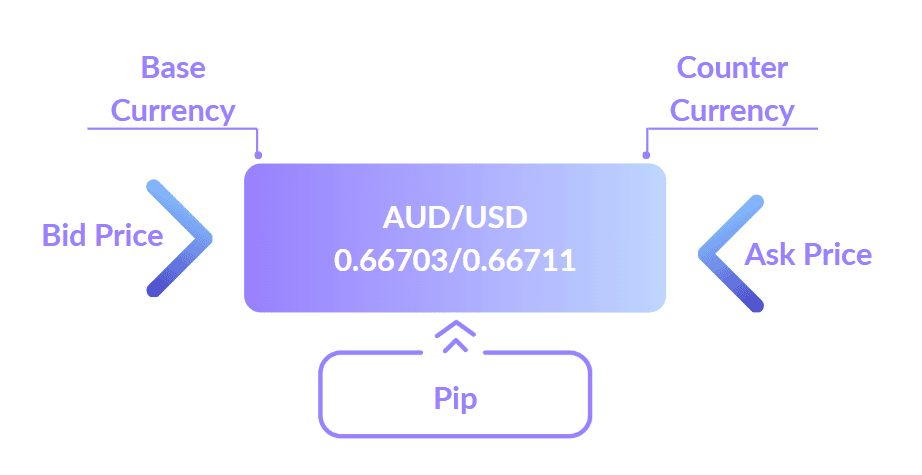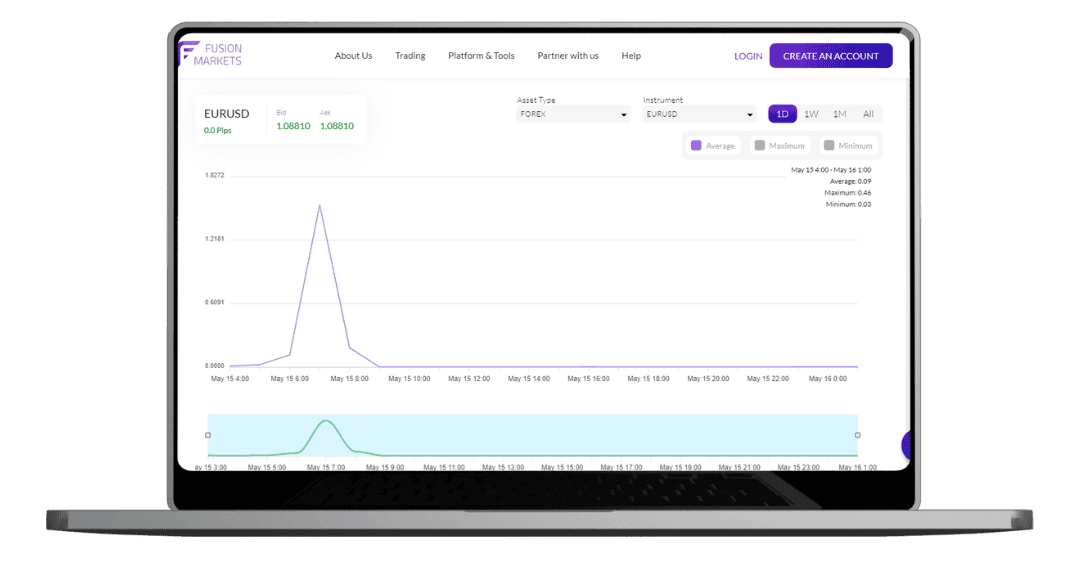Unveiling the Power of Spreads: Trade Smarter with Fusion Markets' Spreads Tool

Are you ready to talk about spreads? Sure, you might think that there is nothing you have not heard before.
John Wooden, an American basketball coach, said it best: “The eight laws of learning are explanation, demonstration, imitation, repetition, repetition, repetition, repetition, repetition.”
So, hear me out. The spread is one of the most important concepts in forex trading, and understanding how it works can have a significant impact on your trading game.
First things first, let's define what a spread is. In forex trading, a spread is the difference between the bid and ask price of a currency pair. The bid price is the price at which you can sell the currency, while the ask price is the price at which you can buy it.

The size of the spread can vary depending on a number of factors, including the volatility of the market, the liquidity of the currency pair, and the broker you are using. In general, the more volatile and illiquid a currency pair is, the larger the spread will be.
Now, picture this: you have finally decided to dip your toe into the exciting world of forex trading. You have done your research, chosen a broker, and you are ready to make your first trade. But wait - what is this? The spread on your chosen currency pair is wider than the Grand Canyon. Suddenly, your dream of becoming a successful forex trader starts to feel like a distant memory.
Okay, maybe that is a bit dramatic. But the point is, the spread can make a substantial difference in your forex trading experience. And when it comes to spreads, tighter is always better.
So, why is it important to trade with tight spreads?
For starters, tighter spreads mean lower trading costs. Some brokers might increase their spreads as part of their fee, which is why on some account types, the commissions are baked into the spreads. Remember that there are also several factors that might have an impact on the spreads. If the spread is wider, that means you are paying more in fees every time you buy or sell a currency pair. Over time, those fees can really add up, eating into your profits and making it harder to achieve your trading goals.
But it is not just about the cost. Tighter spreads can also improve your chances of making a profit. When the spread is wider, it means there is a larger gap between the bid and ask price. This can make it harder to enter and exit trades at the price you want.
For example, if you are trying to buy a currency pair, but the ask price is much higher than the bid price, you might end up paying more than you intended. Conversely, if you are trying to sell a currency pair, but the bid price is much lower than the ask price, you might end up receiving less than you wanted. These slight differences may not seem like a big deal, but over time, they can make a significant impact on your overall profitability.
It is important to keep in mind that not all brokers offer the same spreads. Some brokers may advertise low spreads, but then widen them during periods of high volatility or low liquidity. That is why it is important to do your research and choose a reputable broker with consistent pricing.
But how do you know if your broker is offering you competitive spreads?
Of course, you want a broker who is open and honest about their pricing and fees, and who is willing to provide you with the tools and information you need to make smart trading decisions.
And that is where our new tool comes in. At Fusion Markets, we are committed to providing our clients with the best possible trading conditions and that means being upfront about pricing and fees. That is why we designed our new Historical and Live Spreads tool.

This tool allows traders to view the historical spreads of a particular currency pair over a specified time frame, as well as the current live spreads. This information can be incredibly valuable in helping you make informed decisions about when to enter and exit trades. No more surprises, no more hidden fees – just transparent, competitive pricing.
Think about it - with this tool, you can see how spreads have fluctuated over time, and get a sense of what a "normal" spread looks like for a particular currency pair. This can help you identify when spreads are wider than usual and avoid trading during times when you might be paying more in fees than you need to.
And that is not all - the historical and live spreads tool also helps to promote transparency in the forex industry. We believe that our clients deserve to know exactly what they are paying in fees, and that is why we are committed to providing this information in a clear and accessible way.
If you want to maximise your profits and develop a winning trading strategy, you owe it to yourself to check out our new tool. With its help, you can trade with greater confidence, knowing that you are getting the best possible pricing and keeping more of your hard-earned profits.
So, what are you waiting for? Try out our Historical and Live Spreads Tool today and see how it can help take your trading to the next level. Trust us - you will not regret it!
For more detailed information about our Spreads tool download our guide.
We’ll never share your email with third-parties. Opt-out anytime.